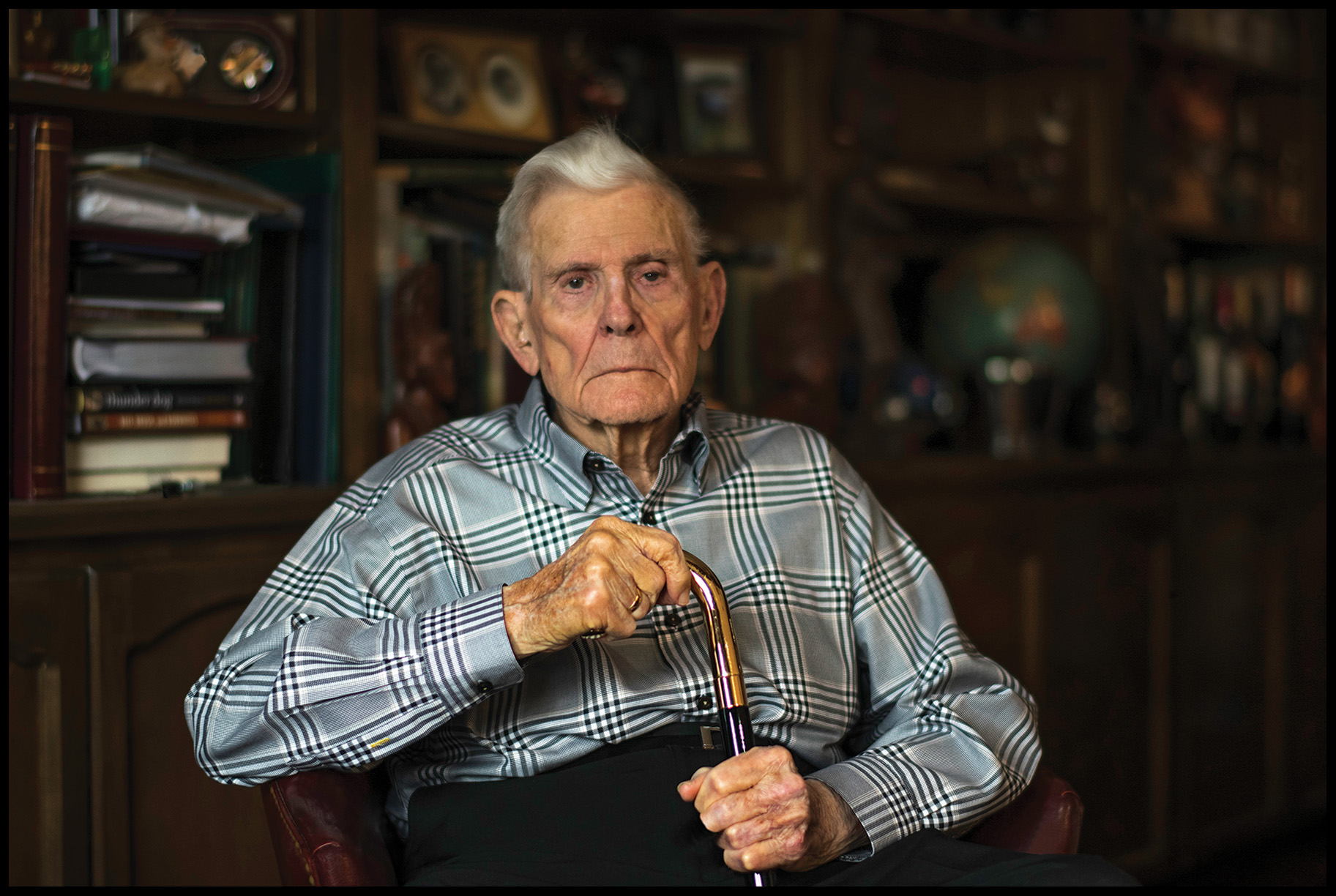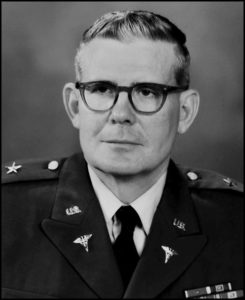
Charles Elia
Medical service officer
Charles Elia
Brigadier General, U.S. Army
1943-1975

LtC. Charles Elia
Ft. Sam Houston, 1962
I had 22 moves in my military service and lived out of a suitcase and foot locker.
I was born in 1921 and grew up in Marshall, Texas. My father was a switchman for the railroad and they made good money during the Depression. I loved to hunt and fish and did that when I could. In 1936 I had a job at the drugstore delivering whiskey. Our county was dry, but a medical prescription made it legal. I got a nickel for each package I’d deliver.
In high school I had bird dogs and they came down with distemper. I decided I was going to college to develop a treatment for distemper. I went to the college of veterinary medicine at A&M. Our initial class was 120 students. When WWII started, many guys had reserve commissions and some enlisted. Out of the 120, there were 57 that graduated.
I graduated in 1943 and went into the infantry. The Surgeon General gave me a commission which committed me to go into medical service when I graduated. I went to Dodd Field and was assigned to the veterinary depot personnel section. The first duty I had was as an inspector for a turkey plant. Most turkeys got shipped to overseas troops. We had 2-1/2-ton trucks backed up for blocks every morning to get the rations for the troops. After that I was assigned to San Antonio. Swift, Cudahy and Armour had plants there and I was an inspector at all of them. This was a big cattle and hog area. We didn’t have good specifications in those days. You had to look at each animal individually to make sure there was no disease, then you’d pass them to go.
My next duty was in California. I got on a troop train and that thing was crowded with soldiers standing. There was a lot of traffic on the railroad and the troops had number one priority. You could see freight trains pull into ice houses to take on ice for perishables. Many times, they couldn’t get in because the troop trains were forcing them to stop. A lot of the food was defrosted. One of my jobs when I got to Los Angeles was to work for the Navy at San Pedro. Every morning a sergeant opened up the railroad car to look at product and take temperatures. Often the products were spoiled; they had no ice because they couldn’t get to the ice houses.
In 1944 we started shipping horses and mules to China, Burma and India (CBI Theater). They used them in the jungles. We’d put 400 mules on a liberty ship. We had to clip their hooves, immunize them and make sure they passed the physical. Every mule had a separate box on the ship. I was there until 1946. The first ship we sent out got about five days out of Hawaii and a German sub hit them with two torpedoes. They cut the mules loose and when the ship went down, the mules all got off the boat. The sharks were feasting on them. The captain and his commander were afloat 43 days. They were catching and eating seagulls.
I went to Chicago for Army Meat and Dairy Hygiene School, then back to California to Camp Anza. It was an embark/debark installation. Troops were coming back from the Pacific and they’d come through there and eat all the steak and ice cream they wanted night or day. I went to Camp Chaffee, Arkansas in 1950 as a post veterinarian covering food processing plants. In 1951 I went to Greece for three years as a veterinary consultant to all the Greek veterinarians assigned to eight divisions.
After that I went to the Surgeon General’s office in Washington, D.C. from 1954 to 1958, and then to Johns Hopkins University School of Hygiene and Public Health. I retired in 1975 as a brigadier general and chief of the Army Veterinary Corps. I was in the Army for almost 34 years. I was ready to get out. I had 22 moves in my military service and lived out of a suitcase and foot locker. After I retired, I worked with the City of Garden Ridge, Texas and at the medical museum from 1978 to 2012.
Life is common sense if you don’t get excited. You sit back and think about it. {11-22-2019 • San Antonio, TX}